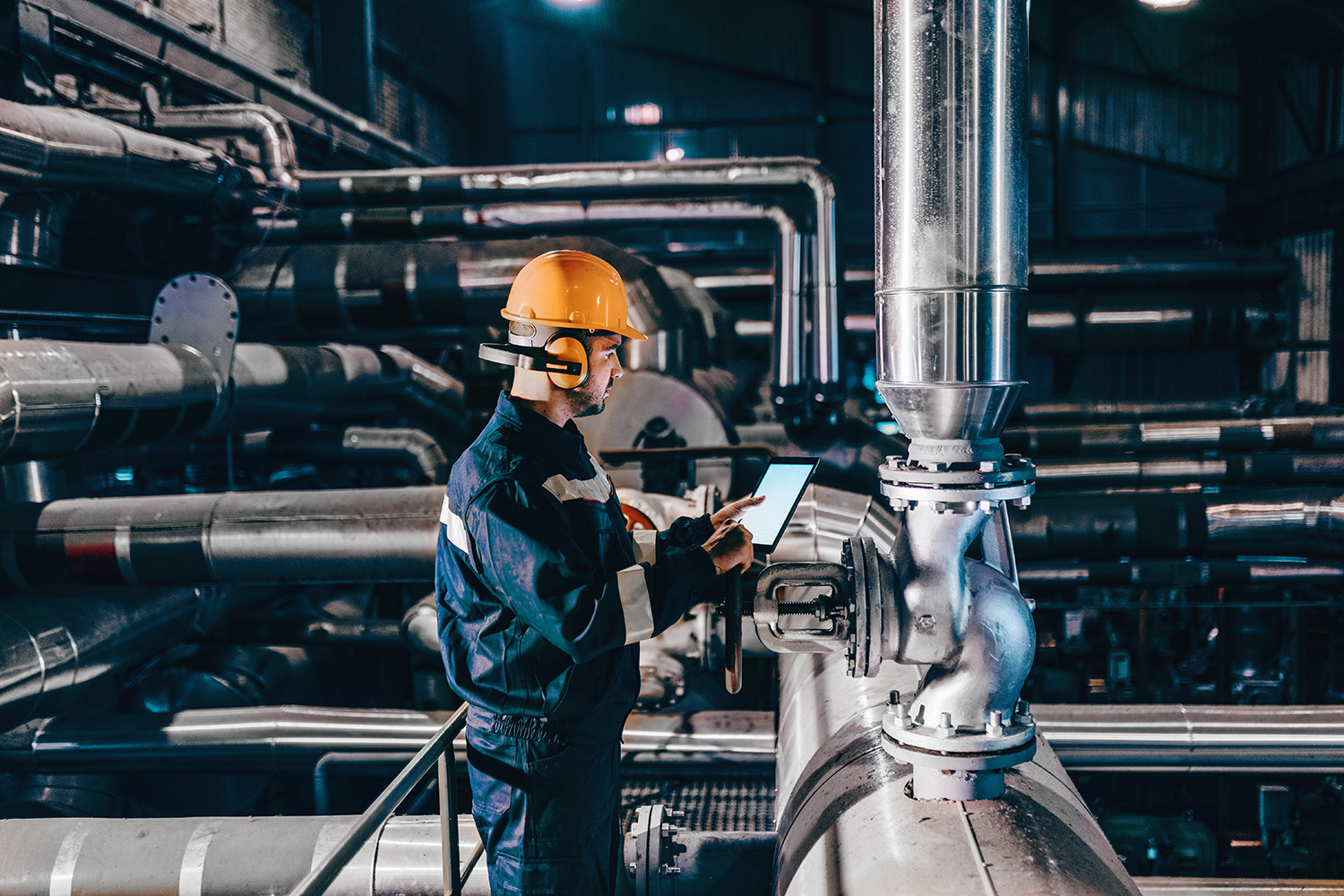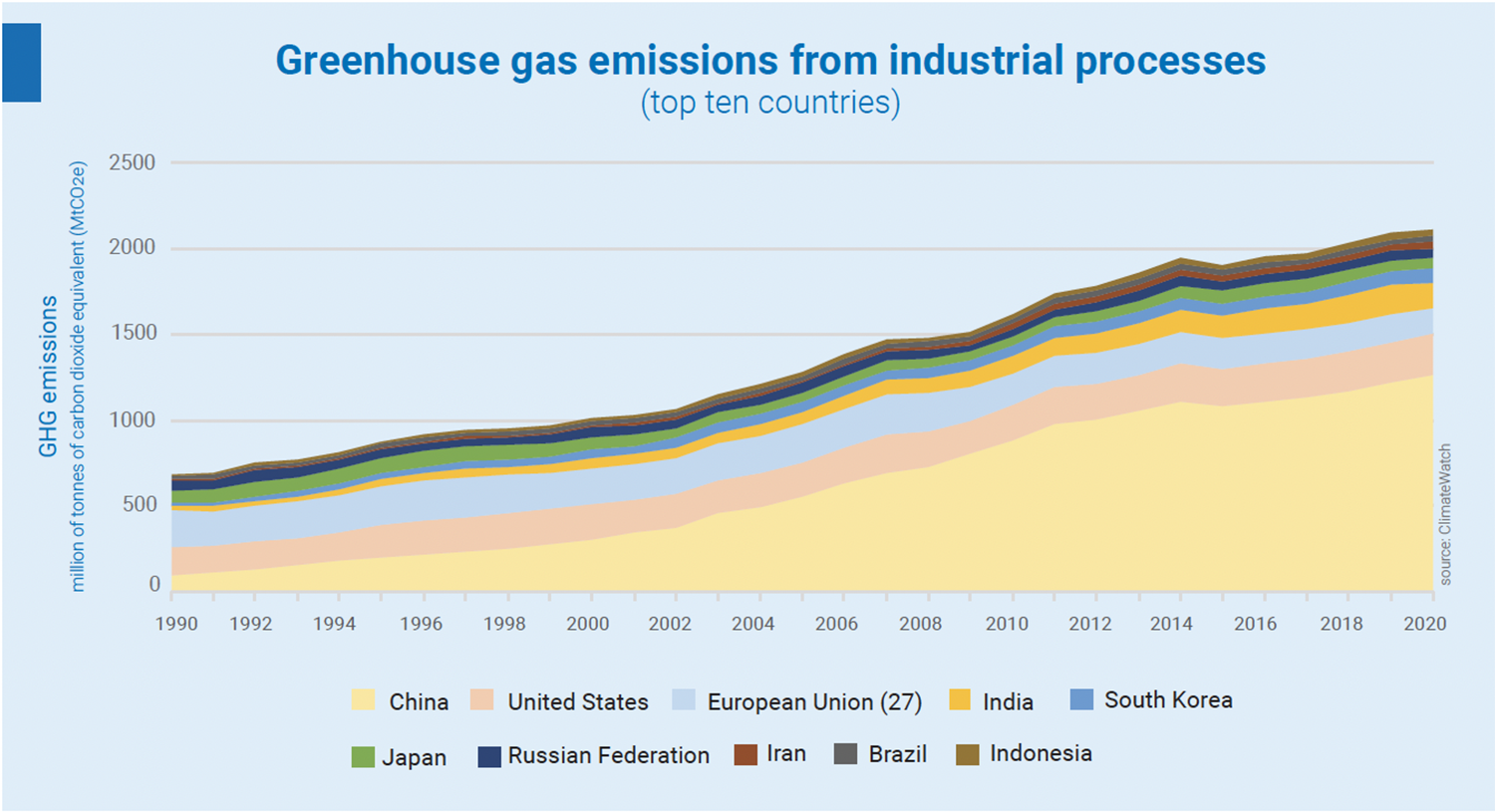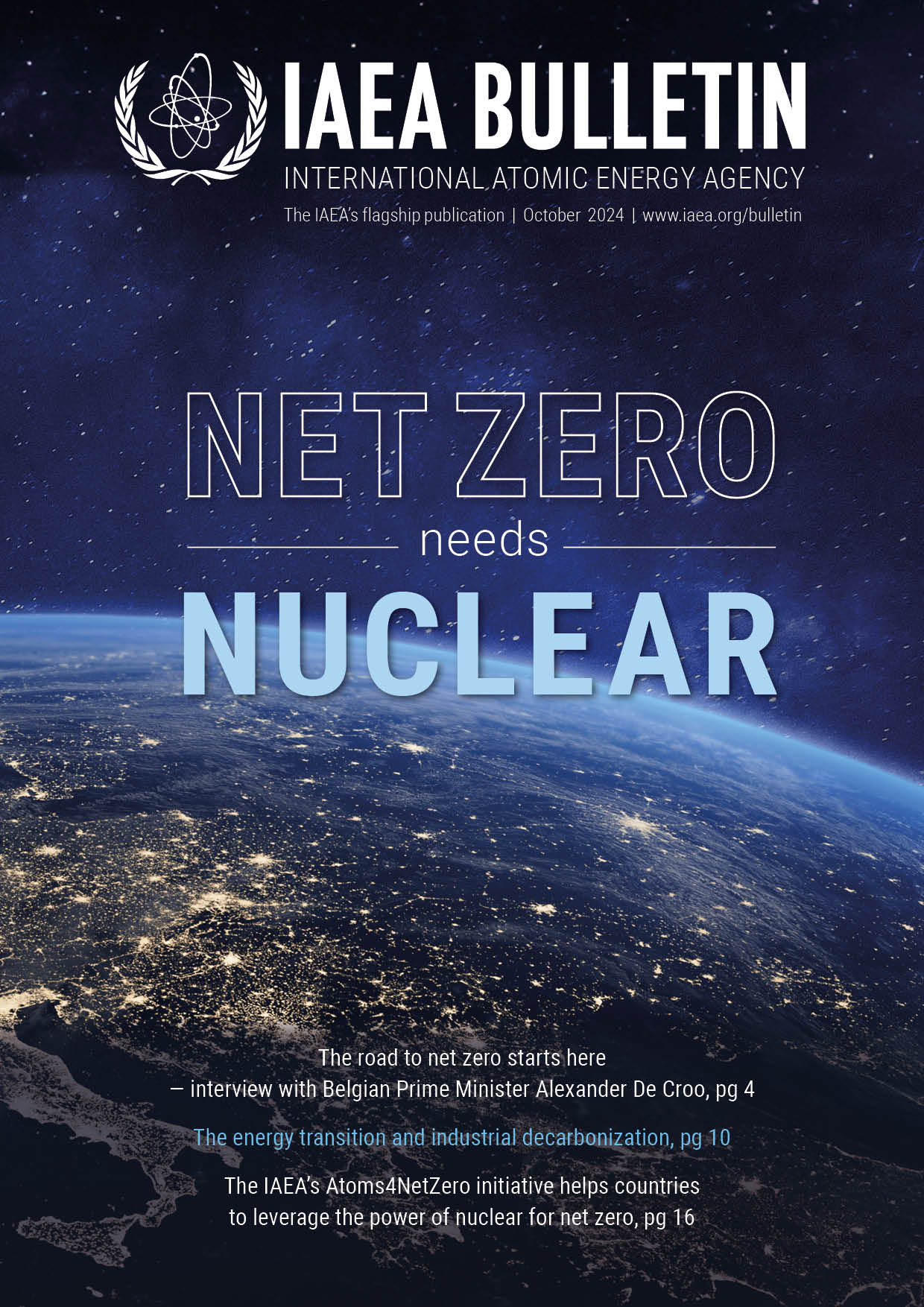Clean energy abundance for a high energy planet is the future we want. More than 30 terawatts (electrical) (TW(e)) of clean firm energy are needed to fully decarbonize the global energy system and enable every global citizen to receive modern energy services equivalent to the Organisation for Economic Co-operation and Development average.
The Energy Transition and Industrial Decarbonization

In 2022, the industrial sector accounted for 37 per cent of global energy use and was directly responsible for emitting 9 gigatonnes of carbon dioxide, or 25 per cent of global energy system carbon. (Photo: AdobeStock)
How can industries and economies keep growing, even as they pursue decarbonization?
In 2022, the industrial sector accounted for 37 per cent of global energy use and was directly responsible for emitting 9 gigatonnes of carbon dioxide, or 25 per cent of global energy system carbon dioxide emissions (excluding indirect emissions from electricity use for industrial processes). Despite decarbonization commitments, process emissions from leading industrial nations have been steadily increasing.

Navigating industrial heat and power needs in the energy transition
A major trend in the energy transition is the push towards full-scale electrification, even in industrial activities. However, this strategy of ‘complete electrification’ presents significant challenges, in particular when it comes to meeting industrial heat and power needs. These needs are different from those of grid-tied, electricity-only resources, as they follow the load profile of a behind-the-meter combined heat and power system. The first challenge is the simultaneous use of both heat and electricity, and the second is the requirement for robust reliability, availability and security in the process. Several other issues — such as the availability of new transmission lines and the efficiency and reliability of the new electrified process — are further barriers.
As analysed in a recent United States (US) Department of Energy report, the majority of emissions in the industrial sectors come from heat: nearly 60 per cent of emissions are the result of heat requirements and on-site power generation. When considering the carbon intensity of the power grid, industrial emissions could easily exceed 70 per cent of total emissions.
The inclusion at the 28th session of the Conference of the Parties to the United Nations Framework Convention on Climate Change (COP28) of nuclear as a clean energy source requiring accelerated development was unprecedented. More than 22 countries pledged to work towards tripling global nuclear capacity by 2050. However, this would produce around 9000 terawatt-hours (TW·h) of energy, equivalent to the total energy consumption of the iron and steel industry sector in 2022. Full decarbonization of energy intensive industries such as chemicals, petrochemicals, cement and paper/pulp would require a far greater increase in clean heat and electricity.
The use of intermittent sources of energy requires a massive expansion of the grid, affecting its stability and resulting in increased system and firming costs. These factors are not aligned with the energy requirements of industry and could severely limit industrial growth. However, a decentralized source of nuclear energy — such as a small modular reactor (SMR) or microreactor at an industrial site or industrial cluster — can provide enough heat and power to meet requirements. Companies like Dow Chemicals are already looking to test this model with plans to install high temperature gas cooled SMRs at one of its US production sites in order to replace natural gas with clean heat and power and decarbonize production.

A sustainable energy future
The chemical sector is a critical provider of materials for a vast array of products such as plastics, fertilizers and pharmaceuticals. Its emissions predominantly derive from three heat generation sources (approximately 40 per cent), electricity consumption (approximately 29 per cent) and direct process emissions (approximately 24 per cent). Moreover, 80 per cent of operational emissions come from on-site point sources. The adoption of on-site nuclear can provide clean heat and power for these essential chemical processes.
Another growing industry is data centres, which are increasing global electricity demand The combined electricity use of Amazon, Microsoft, Google and Meta more than doubled between 2017 and 2021. The electricity consumption of data centres is projected to exceed 1000 TW·h by 2026, and will increase further with the rise of artificial intelligence (AI). As a result, several major tech companies are looking at advanced nuclear power sources, such as SMRs, as a future clean energy option.
SMRs could help to meet the needs of industry through a deployment model based not on a large custom project but on factory built products using a pre-established design, supply chain and delivery process. This approach would reduce costs, improve efficiency and ensure a predictable construction schedule. It would provide a commercially low risk, cost effective, reproducible and scalable solution that aligns with industry goals and contributes to the achievement of global decarbonization targets.
Industrial decarbonization cannot be achieved with traditional nuclear power plants alone. New delivery models are needed that fit within the fast and predictable asset deployment process that companies use today.
Radically new approaches to designing, licensing and delivering clean energy technologies, together with the leveraging of new digital tools, will enable advanced nuclear to provide a solution for a sustainable, equitable and resilient energy future.
__________________________________________________________________________________________
Eric Ingersoll is a strategic advisor and entrepreneur with extensive experience in the commercialization of new energy technologies. He is the founding director and co-Chief-Executive Officer of the non-profit organization Terra Praxis.
Chirayu Batra is a nuclear engineer with extensive experience in advanced reactor technology development. He is co-founder of 92 Ventures, a Denmark-based investment firm.
